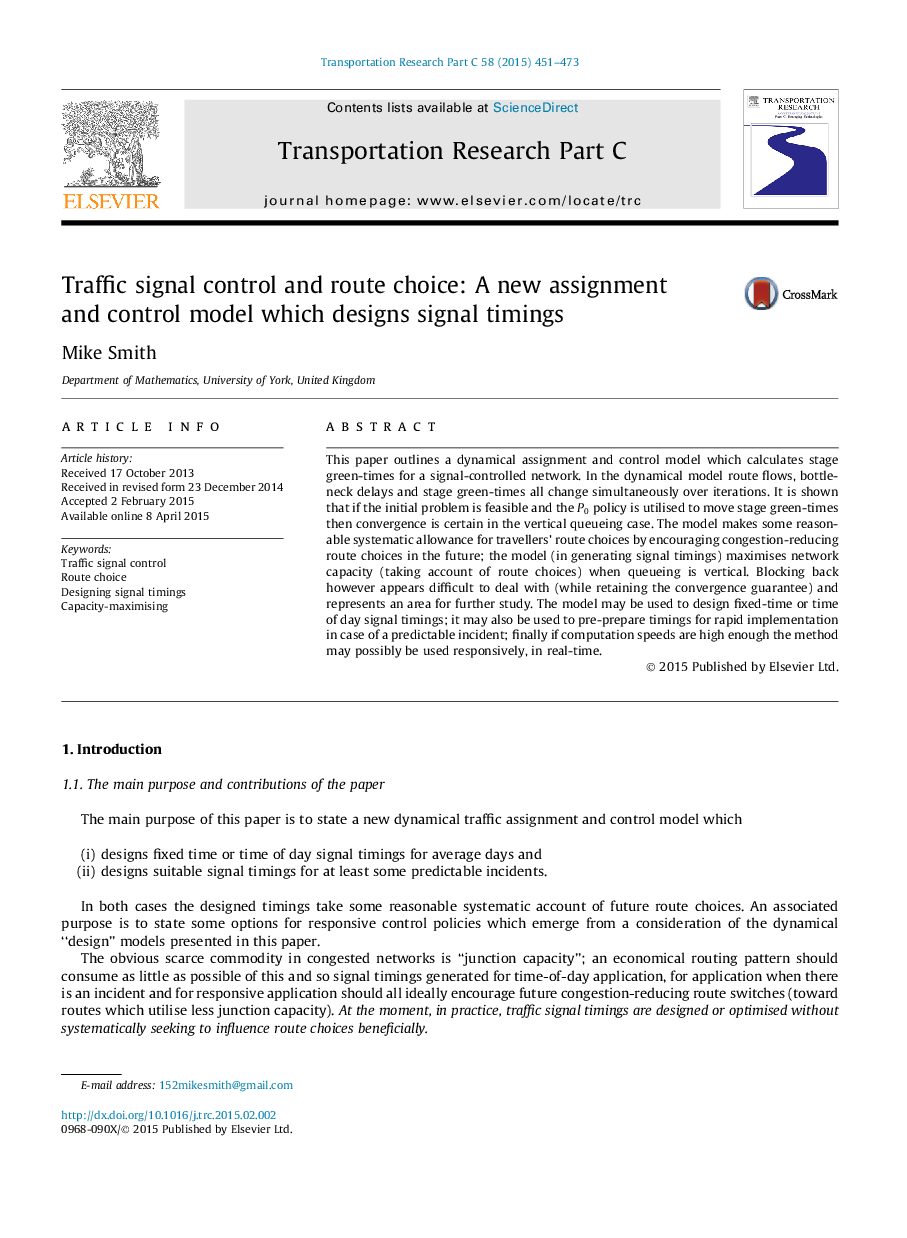| Article ID | Journal | Published Year | Pages | File Type |
|---|---|---|---|---|
| 524933 | Transportation Research Part C: Emerging Technologies | 2015 | 23 Pages |
•The paper states a dynamical model which generates signal timings.•It is shown that under certain conditions convergence of the model is guaranteed.•It is shown that under certain conditions the signal timings generated maximise network capacity.•The generated signal timings may be used as a time-of-day plan or as a plan for application when there is an incident.
This paper outlines a dynamical assignment and control model which calculates stage green-times for a signal-controlled network. In the dynamical model route flows, bottleneck delays and stage green-times all change simultaneously over iterations. It is shown that if the initial problem is feasible and the P0P0 policy is utilised to move stage green-times then convergence is certain in the vertical queueing case. The model makes some reasonable systematic allowance for travellers’ route choices by encouraging congestion-reducing route choices in the future; the model (in generating signal timings) maximises network capacity (taking account of route choices) when queueing is vertical. Blocking back however appears difficult to deal with (while retaining the convergence guarantee) and represents an area for further study. The model may be used to design fixed-time or time of day signal timings; it may also be used to pre-prepare timings for rapid implementation in case of a predictable incident; finally if computation speeds are high enough the method may possibly be used responsively, in real-time.
